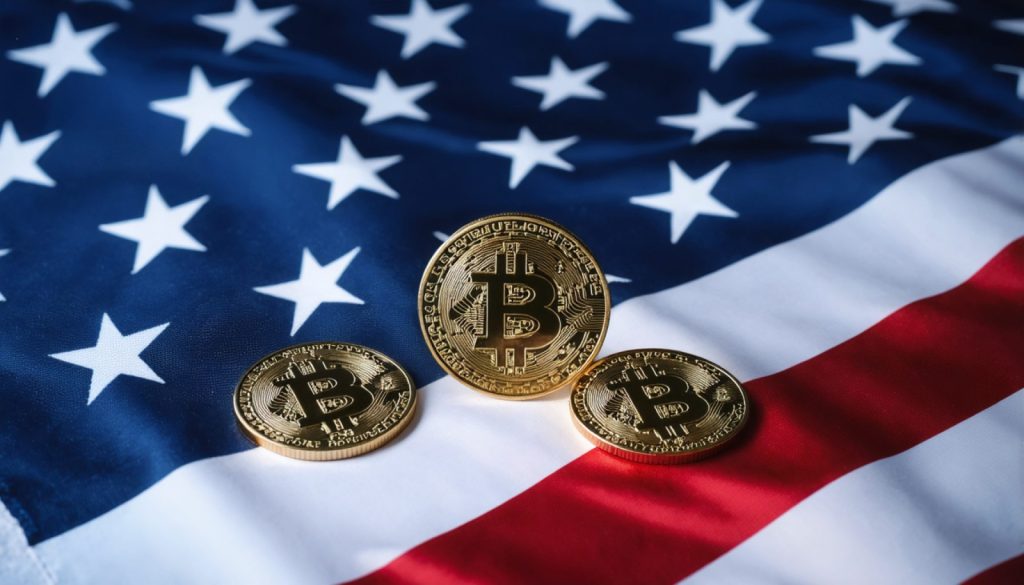
- Tokenization of traditional assets is poised to revolutionize global finance, enhancing accessibility to US equities worldwide.
- Vlad Tenev, CEO of Robinhood, advocates for leveraging blockchain technology to streamline investments in American stocks.
- This transformation simplifies cross-border investing, particularly benefiting regions with unstable local currencies.
- Tokenization democratizes investment opportunities, lowering barriers for international patrons to participate in the US market.
- Expanding access to US equities fosters innovation and entrepreneurship by facilitating easier capital acquisition globally.
- The shift enhances global market connectivity, offering broad access to US economic growth.
- Overall, technology-driven advancements promise to dissolve traditional financial barriers, promoting shared global prosperity.
In the bustling realm of global finance, a new dawn is emerging, shimmering with the allure of seamless, border-transcending trade. At the forefront of this shift stands the intriguing possibility of tokenizing traditional assets—an evolution that promises to carve a remarkable future for US equities.
Vlad Tenev, the dynamic CEO of Robinhood, envisions a world where the vestiges of yesterday’s cumbersome processes give way to the swift elegance of blockchain technology. Through his lens, the tokenization of securities emerges not as a distant dream but as a precisely guided arrow aimed at enhancing the US market’s global supremacy—akin to how stablecoins have propelled the United States dollar into the digital age.
Imagine securities not as isolated relics confined within the ornate walls of towering financial institutions but as digitally carved tokens on global blockchains. This transformation makes the prospect of investing in American stocks as effortless as a few clicks, no matter your corner of the globe. In countries where local currencies flicker with instability, devaluing under economic strain, owning a piece of the American economic tapestry becomes a bastion of wealth preservation and growth.
Tokenization, Tenev suggests, holds the key to democratizing investment, unlocking a vital avenue for patrons outside the traditional US banking corridors. This shift doesn’t merely cater to investors hungry for US equities but is poised to catalyze innovation across entrepreneurial landscapes. By lowering the barriers to capital acquisition in America, it ignites a vibrant tapestry where ideas from across the world find fertile ground to flourish.
The implications are profound. For individuals abroad, access now resembles more of a right than a privilege. A new cohort of entrepreneurs can rise, their ambitious ventures soaring on the breeze of easily acquired capital. As the simplicity and accessibility of tokenized securities take root, the stage is set for an energized, interconnected global market.
Amidst this wave of change, a simple but resonant truth emerges: as technology accelerates and barriers dissolve, the borders that once constrained are poised to vanish. Whether a seasoned investor or a budding entrepreneur, the opportunity to partake in the thriving US market grows, illuminating a path toward shared prosperity in an interconnected world.
The Future of Finance: Why Tokenizing US Equities Could Revolutionize Global Markets
Understanding the Future of Asset Tokenization
The financial world stands at the precipice of a transformative era, where the tokenization of traditional assets, particularly US equities, promises to redefine global market dynamics. This evolution, driven by the integration of blockchain technology, enhances accessibility, efficiency, and inclusivity in asset trading.
How Tokenization Works: A Step-by-Step Guide
1. Asset Identification: Select the asset, such as a share of stock or real estate, to be tokenized.
2. Smart Contracts: Develop a smart contract on a blockchain that defines the terms of the security or asset, ensuring compliance with regulations.
3. Token Creation: Mint digital tokens that represent ownership or interest in the underlying asset.
4. Listing and Trading: List the tokens on a digital exchange to facilitate trading, offering investors a means to buy, sell, or trade these tokens freely.
5. Dividend and Revenue Sharing: Implement automatic distribution of dividends or revenue through smart contracts to token holders.
Real-World Use Cases and Benefits
– Global Access: Investors from any part of the world can easily purchase and trade tokenized US equities, providing a hedge against local economic volatility.
– Liquidity Enhancement: Tokenized assets can be traded continuously on digital exchanges, providing higher liquidity compared to traditional trading hours.
– Reduced Costs: The elimination of intermediaries in transactions reduces fees and accelerates settlement times.
Market Forecasts & Industry Trends
The tokenization market is expected to grow exponentially, reaching significant heights in the next decade (source: Markets and Markets). Financial institutions, seeking to remain competitive, are investing heavily in blockchain technology to facilitate this shift.
Key Features and Benefits of Tokenization
– Transparency: Blockchain’s immutable ledger ensures transparency in transactions.
– Security: High-level encryption safeguards the integrity and ownership of assets.
– Fractional Ownership: Tokenization enables investors to own fractions of expensive assets, democratizing opportunities.
Controversies and Limitations
– Regulatory Challenges: Navigating the regulatory landscape remains a hurdle, as different jurisdictions have varying levels of acceptance of blockchain and tokenized assets.
– Technology Risk: While blockchain is considered secure, it is not immune to cyber threats if poorly implemented.
Insights and Predictions
Tokenization is poised to become a mainstream element of the financial services industry. As traditional financial institutions adopt blockchain, we may witness a gradual phasing out of lengthy settlement times and cumbersome paperwork.
Actionable Recommendations
– Stay Informed: Regularly follow expert analysis and technological advancements in tokenization.
– Diversify Investments: Consider adding tokenized assets to your portfolio for diversification and potential growth.
– Work with Reputable Platforms: Engage with well-established platforms with robust security measures to explore tokenized asset trading.
Conclusion
Tokenization is unlocking new frontiers in finance by making US equities accessible to investors worldwide. The integration of blockchain facilitates quicker, cheaper, and more secure trades, reshaping global investment strategies. This emerging trend offers investors unprecedented opportunities to tap into one of the world’s most lucrative markets without the traditional barriers.
For more insights on blockchain and tech innovations, visit the Nasdaq and Forbes.



